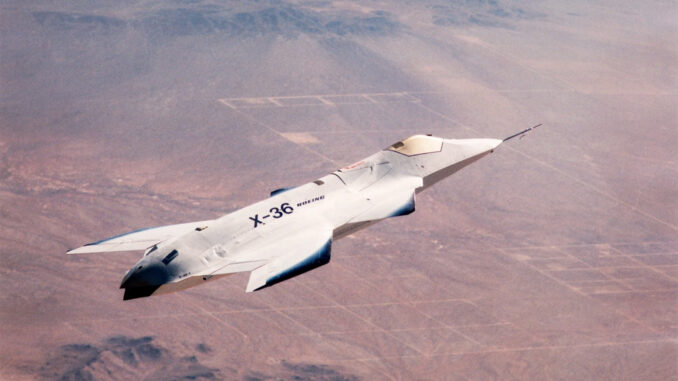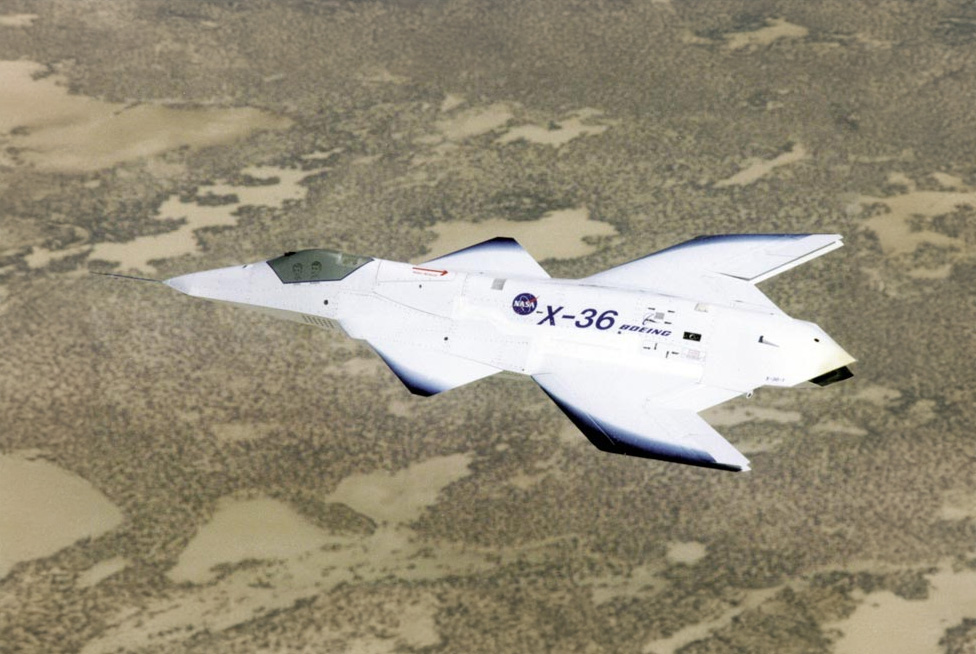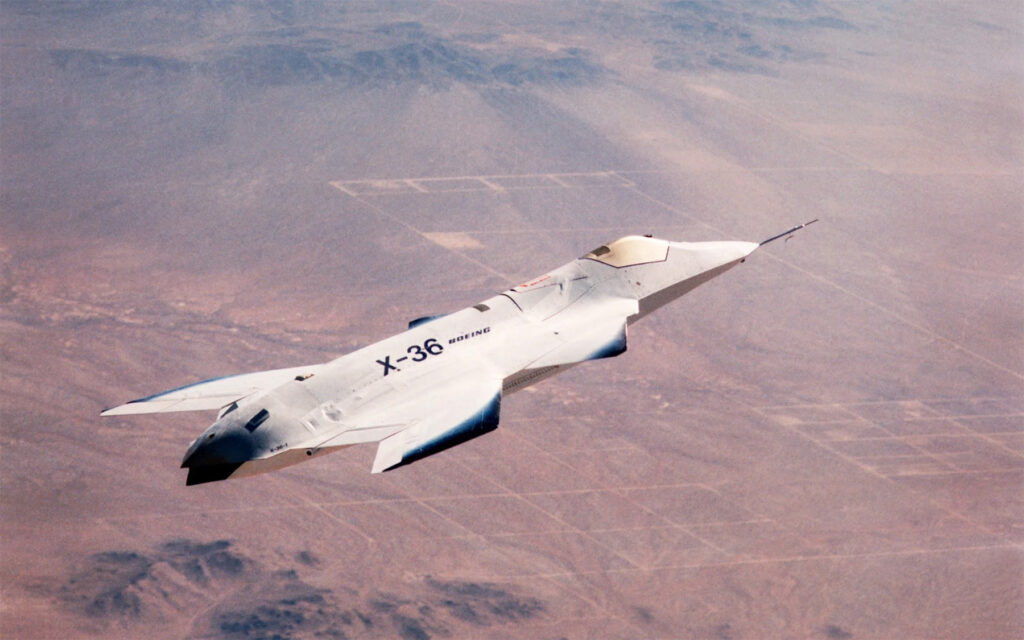
Detailed technical analysis of the Boeing X-36, an unmanned fighter technology demonstrator designed to explore tailless and remotely piloted fighter aircraft.
The Boeing X-36, designed by McDonnell Douglas (later Boeing), is an unmanned technology demonstrator designed to explore tailless fighter concepts for potential military application. Developed in collaboration with NASA, the project improved the manoeuvrability and survivability of unmanned airframes. The X-36 is notable for its unstable design and rapid prototyping techniques. Powered by a Williams F112 turbofan engine, it made 31 test flights before joining aviation museums.

Program history and objectives
The Boeing X-36, formerly developed by McDonnell Douglas, is an unmanned technology demonstrator created for research into the design of tailless fighters. The project was launched in 1989 to explore futuristic fighter configurations, particularly in terms of manoeuvrability, unmanned design and airframe survivability.
Development officially began in 1994 with the construction of two flying aircraft. The aim of the programme was to reduce development costs and speed up the process using rapid prototyping techniques. By sharing the costs equally with NASA, Boeing was able to carry out in-depth research without burdening military budgets.
Design and technical specifications
General characteristics
The X-36 is approximately 5.54 metres long, with a wingspan of 3.15 metres and a height of 0.94 metres. Its maximum take-off weight is 567 kg. These compact dimensions, representing 28% of the size of a traditional fighter, have been chosen to keep costs down while facilitating access to essential internal components during testing.
Propulsion and performance
The X-36 is powered by a Williams International F112 turbofan engine, capable of developing 317 kg of thrust. This engine enables the aircraft to reach a maximum speed of 378 km/h and an operating ceiling of 6,248 metres. The two air intakes on either side of the fuselage, near the cockpit, supply the engine with air.
Control system
One of the most innovative aspects of the X-36 is its lack of a vertical tail surface, a configuration known as ‘tail-less’. To compensate for this inherent instability, several advanced control systems have been integrated:
- Fly-By-Wire (FBW):** This system uses electronic signals to control the movements of the flight surfaces.
- Specialised correction software:** Used to adjust controls and stabilise the aircraft in real time.
- Canard Positioning:** Control surfaces located at the front of the aircraft, near the middle of the fuselage.
- Thrust vectoring:** Orientation of engine exhaust thrust to improve manoeuvrability.
Consequences and implications of the X-36 project
Improved manoeuvrability
The tailless design and the integration of advanced control systems have enabled the X-36 to offer superior manoeuvrability to traditional fighters. These capabilities are crucial for modern air engagements, where the ability to perform rapid and unpredictable manoeuvres can decide the outcome of a battle.
Reduced costs and development times
The use of rapid prototyping and reduced-scale design has demonstrated that it is possible to develop advanced technologies without the need for exorbitant budgets or extended development times. This model could inspire future initiatives to accelerate technological development in military aviation.
Remote control and pilot safety
By eliminating the need for a traditional cockpit, the X-36 has paved the way for a new era of unmanned aircraft, piloted from ground control stations. This considerably reduces the risks for pilots, especially on dangerous missions or in hostile environments.

Future prospects and potential applications
Military application
The lessons learned from the X-36 programme could be applied to the design of future fighters and combat drones. Increased manoeuvrability and sophisticated control techniques are assets for modern military operations.
Research and development
The success of the X-36 underlines the importance of collaboration between the aerospace industry and research agencies such as NASA. Such partnerships are essential to push back the frontiers of technological innovation.
The Boeing X-36 represents a significant advance in the design of tail-less, unmanned fighter aircraft. With its innovations in manoeuvrability, reduced development costs and pilot safety, it has opened up new possibilities in military aviation. The success of this programme underlines the importance of research and collaboration in the development of cutting-edge technologies.
War Wings Daily is an independant magazine.